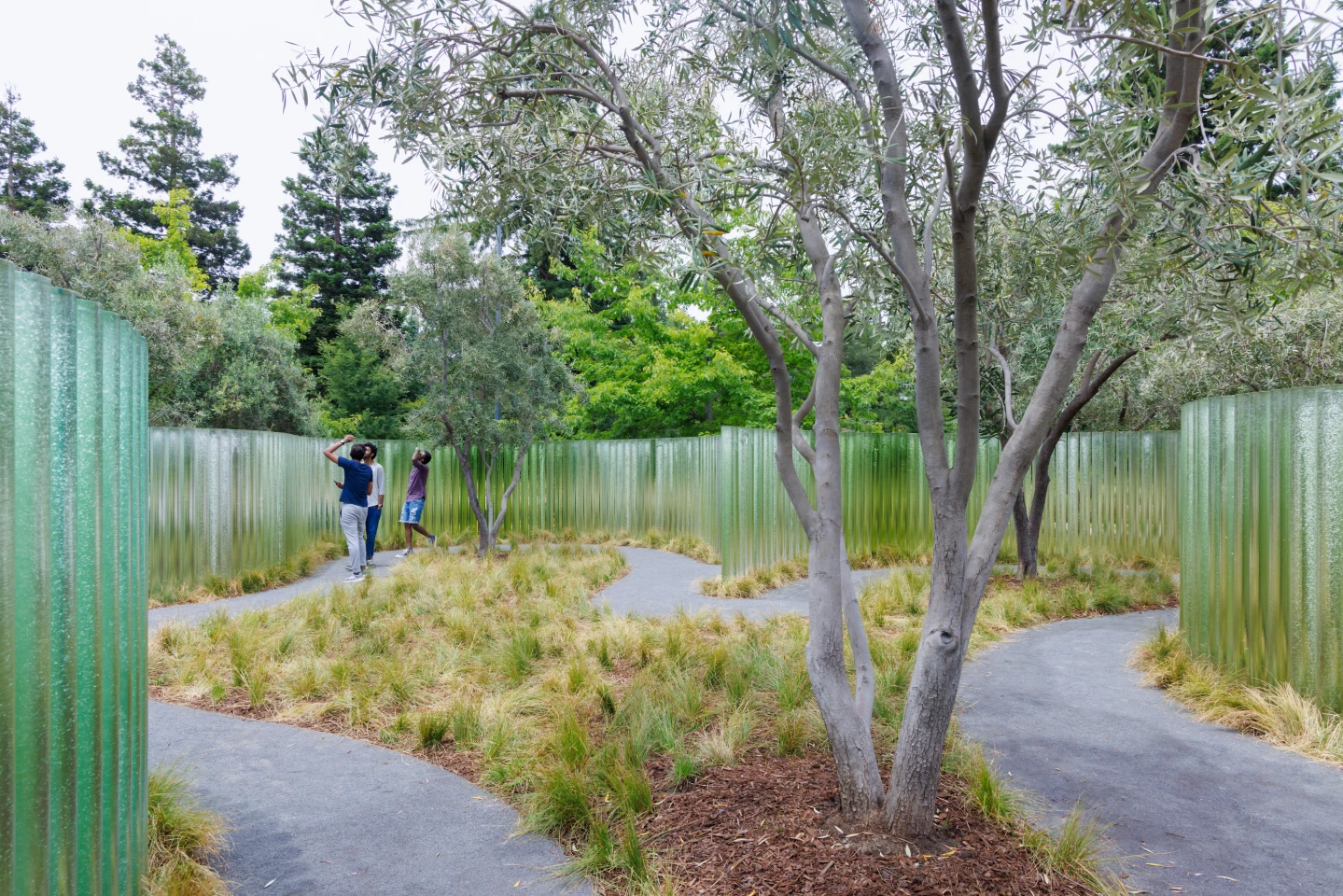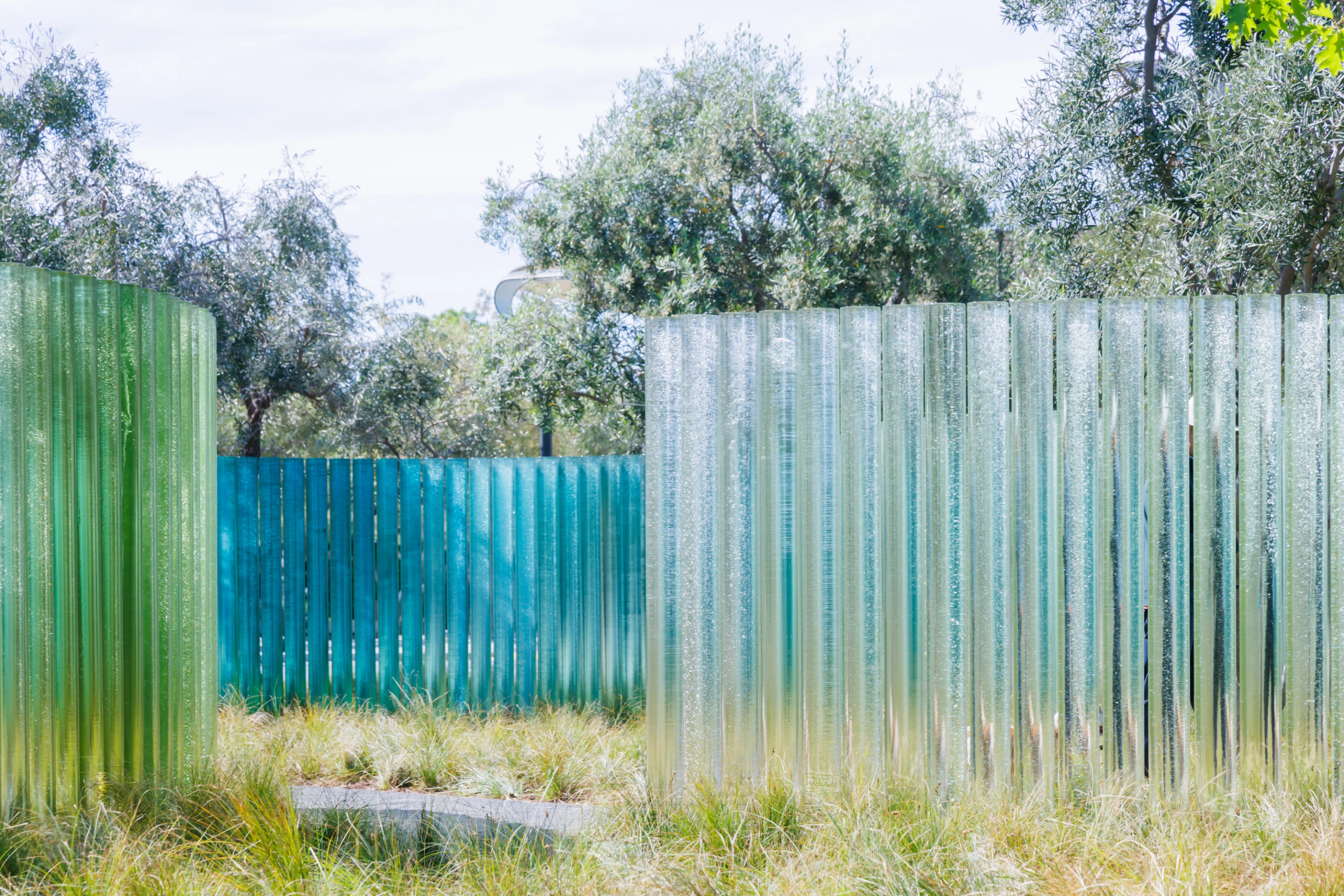Following its Foster + Partners-designed Visitor Center, Apple has made another new addition to its donut-shaped futuristic headquarters in Cupertino, California. This latest project isn't another building, however, but a sculpture park featuring hundreds of glass columns made from sand sourced from deserts around the world.
The project is named Mirage and was created in a collaboration with architecture firm Zeller & Moye and Scottish artist Katie Paterson, and also involved engineer Eckersley O'Callaghan, which helped realize London's Sky Pool and Heatherwick's kinetic greenhouse. It covers an area of 895 sq m (roughly 9,600 sq ft) and weaves in and out of the olive trees directly next to the Apple Park Visitor Center, with a flowing, wavy form that recalls a sand dune and has subtly changing hues depending on the sand used.
Sourcing the sand itself was a real collaborative effort and it came from 70 desert areas from around the world, in as varied locations as North America, Egypt, and South Africa. It was then sent to TU Delft in the Netherlands, which conducted multiple melting experiments to establish the relationships between the sand characteristics and the color hue and tint of the glass. Following this, the actual manufacturing took place at the John Lewis Glass manufacturing in Oakland and roughly 400 different glass cylinders were manufactured.

"Mirage has been cast in whole single glass cylinders – each 6.7 ft [2 m] high – by expert glass makers, with guidance from material scientists," explained Zeller & Moye's press release. "Unique glass recipes were formulated for each desert resulting in pillars with subtle variations of color and texture. Innovative methods of working with glass at this scale were invented, in combination with techniques from the origins of glass making.
"Together the columns combine the world's deserts transformed into liquid-like material, flowing like a dune shaped by the wind. Mirage is a global artwork. In the spirit of co-operation, sand was sustainably collected, in partnership with UNESCO, geologists and communities across the world's desert regions. The artwork celebrates each of the lands from which it is created, and the people who nurture, conserve, and sustain these lands."
If you'd like to visit in person, Mirage is open every day, free of charge.
Sources: Mirage, Zeller & Moye









